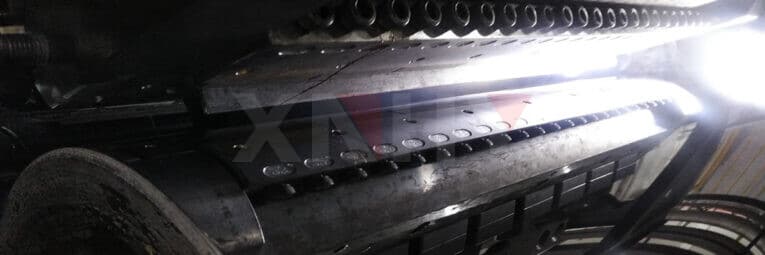
- Home
- All Posts
- Battery Material
- Bipolar Plate
- Manufacturing Process of Carbon-Plastic Composite Bipolar Plates
Blog

Manufacturing Process of Carbon-Plastic Composite Bipolar Plates
Carbon-Polymer(Carbon-Plastic) composite bipolar plates generally manufactured by extruding or molding conductive carbon based raw materials and resins. Carbon based raw materials include carbon black, graphite, carbon fiber, etc, which are added to resins to offer conductivity for bipolar plates. Resin such as PP or PE can be used as binders to fill the pores of carbon raw materials and increase overall mechanical strength. Carbon-plastic composite bipolar plates have good tensile strength and bending strength, and their corrosion resistance is also much better than metal or graphite bipolar plates. In addition, the conductive polymer bipolar plate can be directly welded to the flow frame, eliminate the risk of electrolyte leakage caused by seal ring assembly. For some large-scale projects, low manufacturing costs can improve market competitiveness and industrialization, and have gradually become an important material for the batch production of Vanadium redox flow battery(VRFB) projects.
Compression molding preparation process for Carbon-Polymer Bipolar Plates
After mixing the conductive filler and polymer evenly, add them into a mold at a certain temperature and close the mold. After closing module, the raw materials are heated and pressurized, and after a period of insulation and pressure maintenance, they are cooled and shaped. Finally, release the pressure and open the mold to obtain the finished products. The advantage of compression molding method is that it doesn’t require a high resin content, which is beneficial for obtaining better conductivity. There are fewer waste product, and different structures can be designed by changing the mould. The disadvantage is that the raw material resin is generally fluoropolymer, and the conductive fillers include Ketjen black black, carbon nanotubes, graphene, etc. The overall cost is relatively high, the mould is relatively complex, the processing accuracy is lower, and the processing period is long. The main direction of future research is to seek materials that can meet performance requirements while they are also easy to obtain. In terms of molding technology, continuously optimize the filler ratio, reduce the production cycle, and adapt to the needs of industrialized mass production.
Extrusion molding manufacturing process for Carbon-Plastic bipolar plates
After pre-treatment, the raw materials are mixed, heated and softened by a screw extruder, and continuously extruded into the mold through the head to form the basic shape of the bipolar plates. Then, they are cooled and shaped to ensure uniform surface thickness, and finally cut into the required sizes and specifications. The extruder and mold are directly related to the forming accuracy and quality of carbon-polymer bipolar plates. As a widely used composite bipolar plate forming technique, the continuous manufacturing process and low equipment investment cost provide bipolar plates significant price advantages and market competitiveness. The disadvantage is that sufficient resin content is required to ensure the fluidity of the raw materials, which restricts the electrical conductivity. The research focal point in the future lies in the extrusion molding process under low resin conditions. In addition to simply increasing the content of carbon based conductive materials, the conductivity can also be improved by optimizing the mesh structure and dispersion of conductive fillers. For example, particles with the same content of conductive materials, smaller particle size, and more uniform distribution, have better electrical performance.
Overall, no matter for raw material or equipment, the cost of carbon-polymer bipolar plates manufacturing process is much lower than that of metal or graphite bipolar plates, especially in Vanadium redox flow battery(VRFB) projects, which have entered the stage of large-scale application rather than experimental stage. It also has advantages in mechanical properties, corrosion resistance, scalability and lifespan. In the future, the conductivity efficiency of composite bipolar plates can be further improved and costs can be reduced by improving the preparation process.
About Mr. Zhou
Search
Recent Posts
-
Manufacturing Process of Ca... 11/28/2024
-
Application of Flexible Gra... 05/14/2024
-
PEM Water Electrolysis for ... 04/12/2024
-
Application of Bipolar Memb... 01/09/2024
-
Membrane Electrode Assembly... 11/27/2023
Categories
- All Posts (24)
- Flow Battery (11)
- Battery Material (20)
- Bipolar Plate (13)
- Membrane (3)
- Felt Electrode (1)
- MEA (3)
- Fuel Cell (5)
Contact Info.
Recent Post
-
Manufacturing Process of Ca... 11/28/2024
-
Application of Flexible Gra... 05/14/2024
-
PEM Water Electrolysis for ... 04/12/2024
-
Application of Bipolar Memb... 01/09/2024
-
Membrane Electrode Assembly... 11/27/2023


